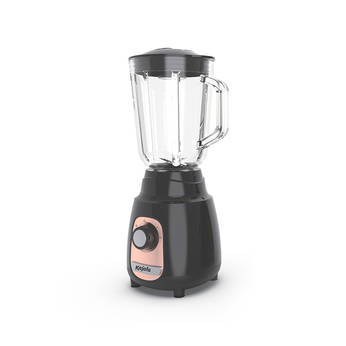What is a citrus juicer?
1. Core Application
Designed specifically for citrus fruits: Efficiently squeezes the juice of oranges, lemons, grapefruits, limes, and other fruits, preserving the pure flavor and preventing the bitter taste of the peel from being mixed in by hand.
2. Working Principle
Squeezing instead of cutting:
Manual Model: Cut the fruit in half, then press down firmly on the rotating hemispherical ribs to physically squeeze the fruit pulp and release the juice.
Electric Model: The automatic cone rotates and presses down, separating the pulp into the juice.
Automatic Filtration Design: A built-in filter traps seeds and coarse fiber, allowing for direct, residue-free juice.
3. Common Types
Handheld Juicer (Simplified Version):
Glass/plastic hemisphere with ribs. Press down on half a lemon with your bare hands to release juice in 10 seconds. Ideal for cocktails and cooking.
Lever Juicer (Effortless Version):
Metal stand with a pressure head. Manually apply pressure on the lever to squeeze a whole orange effortlessly. A must-have for breakfast lovers. Electric Cone Juice Extractor (High-Efficiency Version):
Cut the fruit in half and attach the rotating cone to automatically squeeze the juice and separate the pulp. It's the ideal choice for fresh orange juice for the whole family every day.
4. Irreplaceable Advantages
Juice yield surpasses manual squeezing: Mechanical pressure thoroughly crushes the pulp fibers, yielding 20%-30% more juice than hand-squeezing (especially for firm-fleshed grapefruit).
Flavor Guardian:
Prevents hand heat from heating the juice and causing oxidation and flavor changes.
Reduces the presence of peel oil, resulting in a more refreshing and less astringent lemon juice.
Lazy-Friendly:
No need to peel or remove seeds, just halve and squeeze.
Automatic juice and pulp separation eliminates the need for gauze filtering.
5. Typical Use Cases
Bar Mixing: Quickly squeeze 30 limes for prep, seedless, fast juice.
Breakfast Efficiency: Juice 5 oranges in 3 minutes, fresh orange juice for the whole family.
Baked Goods: Use the pulp-free lemon juice for mousse and marinated fish, creating a delicate texture.
6. Limitations and Alternatives
Citrus only: Apples and tomatoes are ineffective; a standard juicer is required.
Thick-skinned grapefruits are more difficult to extract: Pomelo and pomelos require manual peeling and juicing.
Alternatives:
For small quantities: Prick the lemon with a fork and squeeze by hand.
To preserve the flesh: Manually peel the orange and squeeze the juice through cheesecloth.
| Aspect | Key Details |
| 1. Core Purpose | Extract juice only from citrus fruits (oranges, lemons, limes, grapefruit) while blocking seeds/pulp, avoiding bitter rind oils. |
| 2. How It Works | Presses/squeezes halved fruit against a ribbed dome: Manual: Hand-twist or lever-pressure Electric: Motorized spinning reamer |
| 3. Key Types | |
| - Handheld Reamer | Portable cone; press/twist fruit half (best for limes/lemons) |
| - Lever Press | Hinged arm crushes fruit half onto ribbed cup (effortless for oranges) |
| - Electric Spinner | Auto-rotating cone extracts juice; separates pulp (fast for bulk) |
| 4. Top Advantages | |
| - Higher Yield | Extracts ~20-30% more juice vs. hand-squeezing (esp. firm fruits like grapefruit) |
| - Pure Flavor | Minimal rind contact → no bitterness; juice stays cool (no hand-heat oxidation) |
| - Speed & Cleanup | 10 sec per fruit; most parts dishwasher-safe |
| 5. Ideal Use Cases | |
| - Bartending | Seed-free lime/lemon juice for cocktails |
| - Family breakfast | Quick fresh OJ for multiple people |
| - Baking/sauces | Smooth, pulp-free citrus juice for delicate recipes |
| 6. Limitations | |
| - Citrus-only | Useless for non-citrus (berries, veggies, tomatoes) |
| - Pulp Discarded | Strains out fiber (not for pulp-lovers) |
| - Bulky Storage | Lever/electric models take counter space |
| When to Skip | • Occasional use (1-2 citrus/week)• Prefer pulpy juice• Minimal kitchen space• Juicing non-citrus |



 英语
英语 中文简体
中文简体














